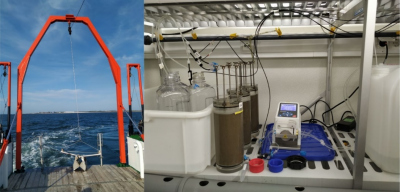- Cluster Ocean Floor
- Research Unit RECEIVER
- Projects
- Organic matter pathways in coastal sandy sediments
Organic matter pathways in coastal sandy sediments
Coastal sandy sediments are often coarse grained and thus permeable, so that porewater water advection is the dominant transport regime in the first centimeters. These sediments are assumed non-accumulating in terms of organic carbon although they often underlie highly productive waters (eg North Sea). They are nevertheless quite active as they consume oxygen at comparable rates as muddy sediments. While the oxygen dynamics are fairly well understood, the organic matter pathways are not. In this project, we investigate the biogeochemical cycling of dissolved and particulate organics at coastal sandy sediments by combining ultra-high resolution mass spectrometry (FT-ICR-MS) to the use of flow-through reactors connected to O 2sensors. Our objectives are (1) to analyze the pathways of organic matter in sands, (2) to determine the particulate and dissolved fractions that are retained and degraded in sands, and (3) to assess the filtration capacity of sandy seabeds and their potential to buffer the anthropogenic matter input to coastal seas. We work together with collaborators at MARUM, the Alfred Wegener Helmholtz Institute for Polar and Marine Research (AWI, Bremerhaven), the Institute for Chemistry and Biology of the Marine Environment (ICBM, Oldenburg) and the Max Planck Institute for Marine Microbiology (MPI, Bremen).



